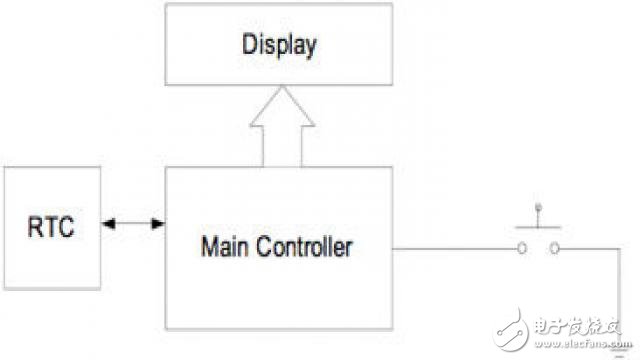Considering the era we live in today, the portability of embedded systems is a key design consideration. Portable systems are typically powered by batteries, and battery life depends on the power consumption of the system. Today, even in the case of commercial power supply applications, power consumption is an important product selection criterion.
Portable devices are generally classified into devices that are powered by rechargeable batteries and devices that are powered by non-rechargeable batteries. If the application uses a non-rechargeable battery, battery life will be a critical specification. For any application, battery life depends on:
The amount of charge available for the battery used. The average current consumption of the application.Another parameter to consider when using a rechargeable battery is the frequency of battery charging and the time it takes to charge each time. In the simplest terms, extending battery life can be achieved by increasing battery capacity or reducing the average current consumption of the application. Because the battery weight is too large to affect the mechanical constraints and cost of the system, system designers can only increase battery power to a limit. While new developments in battery chemistry continue to increase battery charge density, we still need to find ways to continue to reduce average power consumption.
The average power consumption of the application depends on:
Power consumption per circuit component The power supply scheme of the application and how the power is delivered through the gate to the various parts of the design. How the various components in the design work under different operating conditions.The power consumption of each component is available from the device data sheets for each component. It is important to understand the power split information for each component, which helps to design an excellent system for low power optimization.
Think of a simple small battery-powered digital clock. The device can be used for timing and displays the current time when the button is pressed. The device is usually powered down to save power and will only wake up and refresh the display when a button press is detected. The display and main circuit return to power down mode to save power after a period of operation. See Figure 1 for a high-level block diagram of the system.

Figure 1: High-level block diagram of a small digital clock
The circuit uses RTC timing, communicates with the RTC with the host controller chip, and manages the display interface. The entire system is powered off most of the time, the display is off, and the main controller is in power down mode, so current consumption is minimized and all peripherals are turned off. The button acts as a trigger for the wake-up device to capture the RTC data and display it on the display (usually the LCD).
To analyze the power consumption of such a system, the first data to look at is the typical average current that the device and display are in power-down mode. The data sheet for each peripheral and controller should be reviewed for power consumption data. To minimize power consumption and extend battery life, power down all unused peripherals. In this application, this unused peripheral is the display. In contrast to the display, the RTC needs to be powered all the time to achieve timing.
MCUs are often the primary source of total power consumption in most systems. This also applies to the application in this case, especially if you can't choose and use the right MCU properly. There are many ways to reduce the power consumption of the MCU, including but not limited to:
Reduce the working frequency
2. Operate at a lower operating voltage
3. Use low power mode of operation
The MCU can operate at a variety of operating frequencies. However, different devices support different frequencies. The power consumption of the MCU is proportional to the operating frequency, and as the frequency increases, the dynamic power consumption also increases. Therefore, the MCU should operate at the lowest possible frequency while reliably meeting the needs of the system.
In addition, the frequency is also related to the clock source. The device supports a variety of clock source options, including internal high-speed oscillators, internal low-speed oscillators, external crystal oscillators, and more. In most cases, the external crystal improves accuracy, but at the expense of higher power consumption. Choosing a low-power clock source often weighs speed and accuracy. To choose the right clock source and ensure a perfect balance of system performance and power consumption, system requirements should be carefully studied.
Most MCUs support low-power modes of operation to meet the requirements of low-power system designs. Again, the number of supported modes and the characteristics of each mode will vary from device to device. Low power modes should be used appropriately to reduce average power consumption. Common patterns include:
Working mode: The MCU is running normally. Lower power mode: The clock is gated and sent to the MCU to maintain the state of various registers and RAM. Lowest power mode: All peripherals, including the MCU, are powered down.When the clock is gated and sent to the MCU, the power consumption is static power. Static power consumption depends on several factors, including subthreshold conditions and tunneling currents in the FET. In addition, the tunneling current becomes a major factor in the reduction of FETs for small chip designs (ie, the size is reduced such that the thickness of the oxide is reduced).
Today, we already have SoCs that enable a complete system/subsystem integration on a single chip. In addition to the degree of integration, these SoCs also help to reduce the average power consumption in terms of power consumption, making it lower than with independent MCUs and discrete peripherals.
Din Rail Connectors,Din Terminal Block,Din Rail Mount Terminal Block,Rail Terminal Block
Cixi Xinke Electronic Technology Co., Ltd. , https://www.cxxinke.com